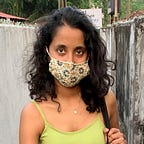The Sun Has Engulfed India
India is in the grips of a heat wave. Our throats are parched and there is a restlessness that comes from not knowing when this will end.
In India and many other South Asian countries right now, we are facing the sun’s wrath. Stepping out at any time of the day has become a nightmare. Most of us want to spend every possible minute in the confines of our cool homes. There is no incentive to step out where the sun threatens to gobble you.
The sun is scorching across India and many other parts of South Asia. And most of these countries are witnessing a stark departure from summer as usual.
While we expect many parts of India to be hot, the surprise element this time is that relatively cool cities like Bengaluru are feeling the heat. This year the city’s temperature has already reached 39.2 degrees, the highest temperature on record.
With a loss of green cover, there are fewer heat sinks, added to this, the increasing construction activity in the city creates an urban heat island, a term for when a city becomes a heat trap, not allowing the heat to dissipate through natural means like rivers, oceans and plants. This has adverse health impacts on vulnerable individuals who do not have the means to use artificial cooling mechanisms
Most people in Bengaluru are fazed by what is happening, there is talk of heat everywhere, and the city is experiencing the sun’s wrath like never before. Citizens of Bengaluru did not anticipate heat waves would catch up with them so soon and would knock on their doors like a recurring nightmare.
Being part of climate action circles comes with the awareness of the heat waves getting worse every year. In future, the heat wave days across India are expected to increase. This means more days where it would be impossible to step out and higher peak temperatures making our own homes unliveable
While news articles stick to the facts and caution people to stay safe as if this is summer as usual, the reality is that it is a city that feels like it has been set on fire. This summer has shown us that measures to adapt need to go beyond individuals trying to wear light clothes and hydrate themselves.
With the ongoing elections, the topic that rarely finds discussion in electoral debates is climate change. Heat waves are defining the political landscape of South Asian countries and economies. Take Karnataka for instance, the ongoing heat wave and drought crisis have pushed the state into unchartered waters or should one say unchartered drought. The crop yields have drastically come down, and food prices are rising.
There are parts of Karnataka that are in severe drought. While the centre and state are in a tussle over how much money needs to be provided for relief measures, neither is working/ actively proposing long-term solutions.
Growing climate-resistant crops, wastewater treatment and rainwater harvesting are some solutions. Solutions implemented by other water deficit regions like Israel and Australia offer a lesson to the rest of the world. The good part is these technologies already exist, it is about having the political will to learn and implement
We need governments that can think beyond their 5-year tenures and invest in long-term solutions across different problem areas when it comes to climate
While it was not scary a while back, today we are in the throes of a heat wave with things going down the drain in years to come. We need climate to be an active point of any political discussions.
The ongoing heat waves, droughts and floods will impact India disproportionately. Geographically we are in a tricky spot, surrounded by warming oceans, drying underground water and melting Himalayas.
While the per capita emissions per Indian have been low, climate change is not a rational enemy, it will punish disproportionately and India stands on the cusp of being a scapegoat in climate-related disasters unless its government decides to step up and provide long-term solutions to long-term problems.
Meanwhile, cities like Bengaluru will continue to sizzle every year, the fact that it is relatively better than the rest of India is not a solace.
My pet is an indicator of how hot the city is, on days that it is hot, she hardly touches any food, which has been most days in the past month. As for us we sleep on the floor and take cold showers.
The heat sucks the energy out, I speak to friends and family and most people prefer staying indoors and conserving energy instead of stepping out. Even at home, they feel drained, making daily chores difficult.
It is frustrating and scary at times, this problem that glares at us. The solutions aren’t at the pace of the problem. While the Indian government has a lot of weight to pull, we also need the developed countries to take ownership.
This would mean contributing to adaptation funds that can help developing countries like India tackle climate-related disasters without blowing through its GDP at the very best, and acknowledging that Climate change is a real problem that impacts real people in the global South at the very least.
